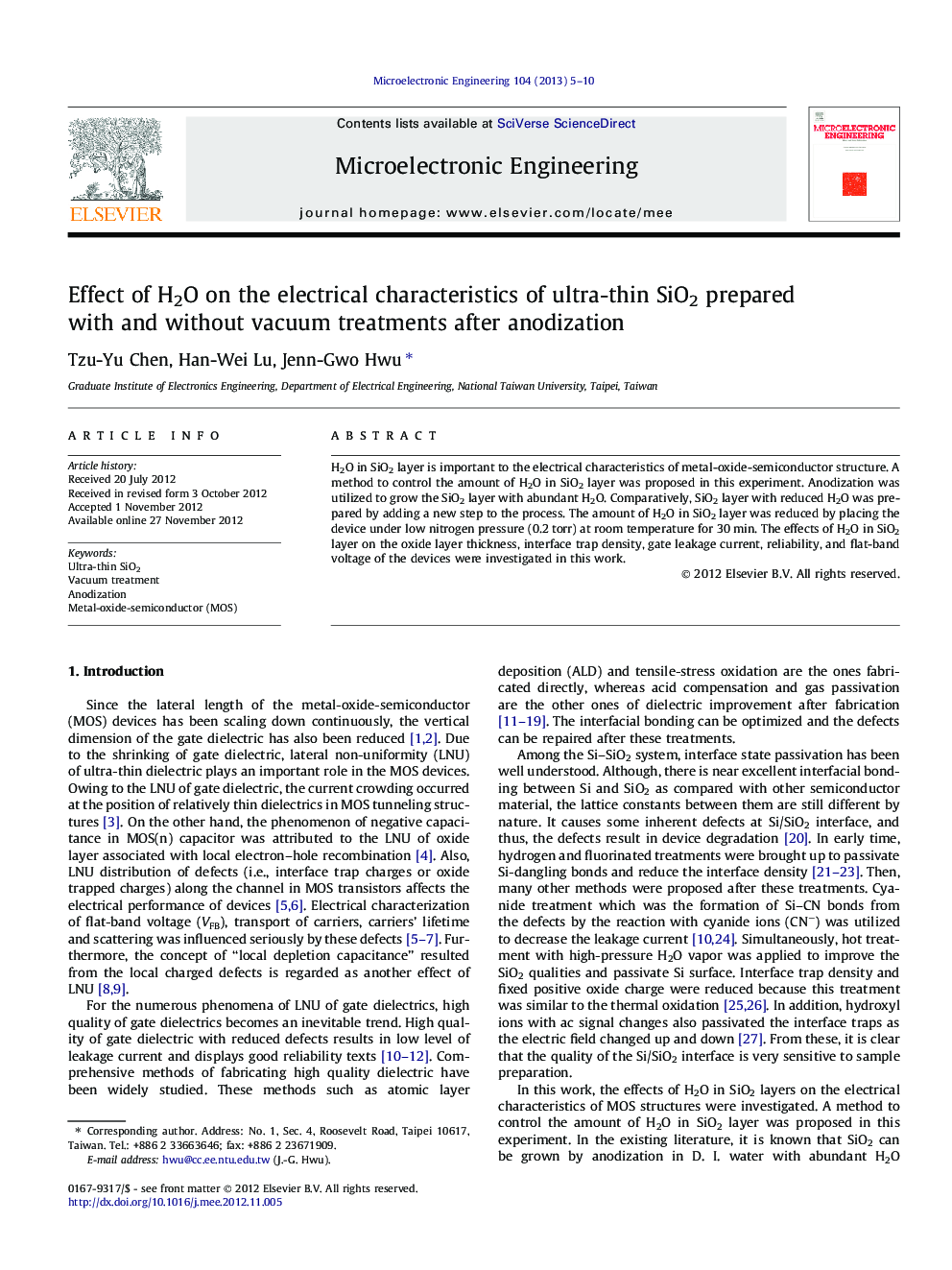| Article ID | Journal | Published Year | Pages | File Type |
|---|---|---|---|---|
| 540164 | Microelectronic Engineering | 2013 | 6 Pages |
H2O in SiO2 layer is important to the electrical characteristics of metal-oxide-semiconductor structure. A method to control the amount of H2O in SiO2 layer was proposed in this experiment. Anodization was utilized to grow the SiO2 layer with abundant H2O. Comparatively, SiO2 layer with reduced H2O was prepared by adding a new step to the process. The amount of H2O in SiO2 layer was reduced by placing the device under low nitrogen pressure (0.2 torr) at room temperature for 30 min. The effects of H2O in SiO2 layer on the oxide layer thickness, interface trap density, gate leakage current, reliability, and flat-band voltage of the devices were investigated in this work.
Graphical abstractFigure optionsDownload full-size imageDownload as PowerPoint slideHighlights► Vacuum treatment was used to reduce the amount of H2O in anodized SiO2 layer. ► Residual H2O in SiO2 layer may effectively increase the SiO2 thickness after POA. ► Dit, uniform area ratio, leakage current, and reliability are varied by vacuum treatment. ► Insufficient passivation due to reduced H2O in SiO2 layer may introduce negative charges.
